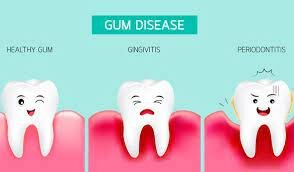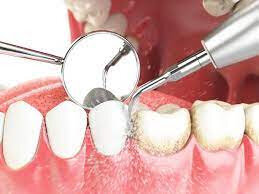Gum Diseases
Gum diseases are of two types: a mild form of gum disease includes gingivitis, and a severe form of gum disease includes periodontitis. Gingivitis means inflammation of the gum which usually happens before periodontitis which means inflammation and destruction of the surrounding tissues of the teeth like periodontal ligament, alveolar bone, etc. Most of the humans get gingival inflammation at some point or the other point in their lives but due to their negligence, it progresses into periodontitis.
Gingivitis
Gingivitis is a very common and mild form of gum disease that causes irritation, redness, and swelling of the gingival tissues. The most common cause of gingival inflammation is poor maintenance of oral hygiene. Due to poor oral hygiene, the food accumulated in between and on the surface of the teeth will attract the bacteria which releases acids onto the surface of the teeth and cause demineralization of the teeth material and bacterial invasion into the gums will cause gingival inflammation.

Symptoms of Gingivitis
Healthy gingiva is firm and pale pink in color which is firmly adhered to the surface of the teeth. The signs and symptoms of the gingivitis include:
- Tender and soft gingiva
- Swollen and puffy gingiva
- Dusky red or dark red gingiva
- Bleeding gums during brushing
- Bad breath or halitosis
- Gingival recession
Periodontitis
Periodontitis is a serious gum infection that damages the soft tissues surrounding the teeth and can destroy the alveolar bone supporting the teeth which ultimately makes the teeth mobile leading to tooth loss. Its causes also include poor oral hygiene which initially causes gingivitis and prolonged negligence may lead to periodontitis. Though it is a highly common infection of gingiva it can be treated and taken care of with frequent dental visits.

Symptoms of Periodontitis
- Swollen, puffy, bright red, or purplish gingiva
- Gums bleed even on touching
- Bad breath and halitosis
- Pus discharge can be seen in between the teeth and gums
- Loose or mobile teeth
- Severe burning and pain in gums
- Spacing between the teeth
- Severe gingival recession
- Periodontal pockets

Causes of Gum diseases
- Poor oral hygiene or wrong brushing techniques
- Underlying systemic diseases like HIV, cancers, and diabetes can become a cause because these patients have poor immune systems making them prone to diseases very easily
- Hormonal changes like in pregnancy or during puberty, menopause make gums more sensitive making them more susceptible to gingivitis
- Habits like smoking can surely add to the cause of gingival diseases
- Medications that lower the saliva flow can affect oral health and some anticonvulsants like Dilantin and anti-angina drugs like Procardia and Adalat can cause abnormal growth of gingival tissues leading to poor maintenance of gums.
- Genetical history of dental problems
Diagnosis
- Examining or checking the oral cavity for plaque or calculus
- Check for bleeding and pus discharge
- Checking for the underlying systemic diseases
- History of medications that cause dry mouth
- Checking for smoking history
- Determining the pocket depth at several sites. For healthy gingiva, the depth is between 1 to 3 mm but for pockets, the depth is more than 4mm indicating periodontitis.
- Dental radiographs can be taken to examine the level of bone destruction
Treatment
Non-Surgical Methods
- Scaling removes tartar or calculus which contains bacteria from the teeth by using ultrasonic scaling devices.
- Root planning smoothens the affected root surfaces stopping the further progression or destruction of the gingiva and teeth.
- Antibiotics can help control bacterial infections. Topical antibiotics can include mouth rinses and gels to eliminate bacteria.

Surgical Methods
- Flap surgery or pocket reduction surgery can be useful to eliminate deep periodontal pockets and removes the bacteria from the deeper sites of the teeth.
- Bone grafting can be done in cases where bone destruction is severe, to help in the regeneration of the bone. It covers the exposed roots and reduces the loosening of the teeth.
- Soft tissue grafts can help in reducing further gingival recession and gives the teeth a more pleasing appearance.
- Guided tissue regeneration allows the regrowth of bone that was destroyed by bacteria by using a small piece of biocompatible fabric between the existing alveolar bone and the teeth which prevents unwanted tissue from entering the area, allowing the bone to grow back.